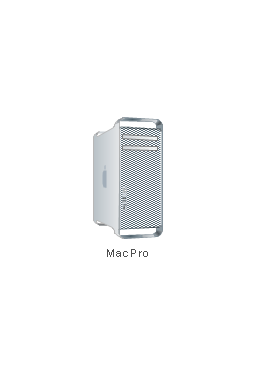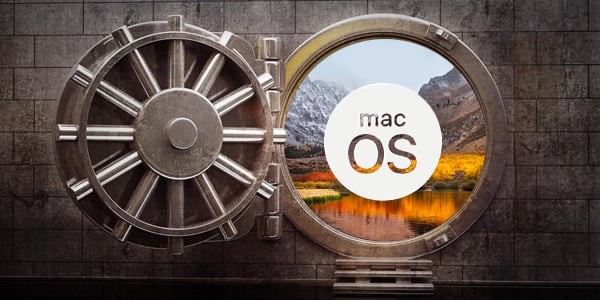Glossary for iTunes on Mac Term Definition AAC Advanced Audio Coding (also called MPEG-4); a standard way of compressing and encoding digital audio. AAC files can be played using iPod, iPhone, iPad, and apps that support QuickTime. AAC-encoded files rival the quality of audio CDs, and sound as good as or better than MP3 files encoded at the same or even higher bit rate. For example, a 128 kbps AAC file should sound as good as or better than a 160 kbps MP3 file.
Because the bit rate is lower, the AAC file will also be smaller than the MP3 file. AAC files enable you to store the most music on your hard disk or device. At the High Quality setting, AAC files use approximately 1 MB of disk space per minute.
AIFF Audio Interchange File Format; an uncompressed and lossless format for digital audio. Use AIFF files to burn high-quality audio CDs from imported songs. AIFF files use approximately 10 MB of disk space per minute. AirPlay A feature that lets you play music from an iTunes library on multiple speakers, Apple TV, or other AirPlay-enabled devices that are connected to the same Wi-Fi network. AirPods are the wireless headphones you use with all your devices. App Store A part of the iTunes Store, where you can download apps for iPod touch, iPhone, and iPad.
See the Apple Support article. Apple ID An account you need to download items from the iTunes Store, use Genius, or subscribe to Apple Music. If you’ve purchased items from the Apple website or used iCloud Photos in the Photos app, or if you have an iCloud account, then you have an Apple ID. If you don’t have one, you can set one up using iTunes. Apple Lossless An Apple-developed method for creating digital music files.
Apple Lossless files can be played using apps that support QuickTime, iPhone, iPad, and some iPod models. Use Apple Lossless to listen to songs on audiophile-quality sound systems with no loss of quality, and to burn high-quality audio CDs from imported songs. Apple Lossless files use approximately 5 MB of disk space per minute. Apple TV A device for playing content downloaded from the iTunes Store or from your iTunes library on your home theater system. Audible website A website (audible.com) that sells audiobooks and other spoken programs. Items purchased from the Audible website can be downloaded to iTunes, and can be played on your computer, iPod, iPhone, or iPad. Audiobook A recorded spoken program, such as a book being read aloud.
As defined in Learning Center Glossary by Federal Home Loan Mortgage Corporation Freddie Mac The interest rate used in calculating the borrower's PITI to qualify the borrower for the subject property mortgage.

You can purchase and download audiobooks from the iTunes Store and the Audible website. Authorize To enable a computer to play iTunes Store purchases.
- Glossary of Fixed Income Market Terminology Investor Research & Communications Page 4 of 12 Dollar Roll A form of financing where a security is exchanged for cash in the current month, to be reversed at a later time by a “substantially similar” security. It is a special type of.
- Media Access Control Address (MAC-A, MAC): A hardware address that uniquely identifies each node of a network, as in IEEE-802 (Ethernet) networks. The MAC layer interfaces directly with the network medium. Report an issue with this definition: source: Electrical Engineering Glossary.


You can authorize up to five computers at a time. Note: A computer can play iTunes Plus songs without authorization. You can also authorize your computer to play your Audible website purchases. Burn To record songs onto a CD or DVD.
Clean A label issued by the Recording Industry Association of America to identify an edited version of an explicit recording. Crossfade To start playing the next song while the previous song is still playing. Deauthorize To prevent an authorized computer from playing iTunes Store purchases. You should do this before you give away or sell your computer.
Download To transfer files from one computer or system to another; for example, you can download music from the iTunes Store to your computer. Eject To remove a disc (CD or DVD) from a disc drive, or to remove an iPod, iPhone, or iPad from the list of devices in the iTunes window. To eject a disc or device, click the Eject button next to the item. Encoding format The type of format used to create a digital file.
Audio encoding formats include AAC, Apple Lossless, MP3, and others. Video formats include MPEG-4, H.124, and others. Equalizer A set of controls for changing sound frequencies (for example, boosting the bass on a rock song) to accommodate speakers, personal taste, and other factors. Explicit A label—issued by media producers—that alerts consumers to content that might be inappropriate for children.
See “Clean.” Family Sharing A feature that enables up to six family members to download each other’s iTunes Store purchases to their own computers and devices. Genius A feature that enables you to find new music—in your library and in the iTunes Store—related to music already in your library. Genius Mix An ongoing playlist in a particular genre—like a commercial-free radio station playing your favorite songs—that iTunes creates from music in your library. ITunes can create up to 12 Genius Mixes. Genius Playlist A playlist iTunes creates of songs that go well with a song you specify. Gracenote media database A music recognition technology that contains information about audio CDs.
ITunes uses Gracenote data to display a CD’s name, song titles, and so on. Home Sharing A way to share and import items from up to five iTunes libraries on other computers in your home network. To use Home Sharing, you must have an Apple ID, and all computers in the Home Sharing network must be authorized to play purchases made using that Apple ID. HomePod is the speaker for your home that you control with Siri to play music from the Apple Music catalog. ICloud iCloud stores your music, photos, apps, contacts, calendars, and more, and wirelessly pushes them to all your iOS devices and computers. ICloud integrates seamlessly with your apps, so everything happens automatically. To get a free iCloud account, go to.
ICloud Music Library If you subscribe to Apple Music or iTunes Match, your music is stored in your iCloud Music Library. You can access your music at any time, wherever you’re connected to the Internet. Items in your iCloud Music Library appear in iTunes, together with the rest of your music collection.
Import To add music, video, and other media to your iTunes library. IOS software The mobile operating system software used by iPhone, iPod touch, and iPad. ITunes Extras A unique experience that features exclusive interviews, videos, photos, and more. Available with select movie purchases in the iTunes Store.
ITunes library The collection of music, videos, and other media you have imported into iTunes. To view the contents of your iTunes library, choose a media type from the pop-up menu at the top left. ITunes Library file A database of your library’s contents. If you move or delete this file, iTunes creates a new one the next time you open iTunes, but it doesn’t contain playlists, song ratings, comments, and other information you created. ITunes Match An annual subscription that safely stores all your music in iCloud—even songs imported from other sources and not purchased in the iTunes Store—and makes it available on up to 10 of your devices and computers. To use iTunes Match, be sure you turn on iCloud Music Library on all the computers and devices where you want to use it.
If you subscribe to Apple Music, you don’t need to subscribe to iTunes Match unless you still need to access your music on an Apple TV (2nd or 3rd generation). ITunes Plus Songs and music videos, available from the iTunes Store, that are encoded in high-quality, 256 kbps AAC format.
Banking Definitions Glossary
There are no burn limits on iTunes Plus items, and they’re free of DRM (Digital Rights Management) limitations. ITunes Plus content can be played on iPod, iPhone, iPad, Apple TV, HomePod, all Mac and Windows computers, and many other digital music players. ITunes Store An online store, accessible through iTunes, where you can purchase music and videos, rent movies, download free podcasts, and more. MP3 An audio format commonly used for digital audio players. MP3 can be played using computers and most digital music players, including iPod, iPhone, and iPad. MP3 files use approximately 1 MB of disk space per minute. Multi-Pass An option for buying TV shows from the iTunes Store.
Designed for shows that don’t have traditional “seasons” (news shows, for example), the Multi-Pass purchases a set number of episodes. Parental controls Options that enable a computer administrator to limit access to features. In the Restrictions pane of iTunes preferences, for example, you can prevent someone from accessing the iTunes Store. Playlist A collection of songs or other media (videos and podcasts) arranged in a custom order. Podcast A radio- or TV-style show you can download from the Internet for free from the iTunes Store, as well as from various websites. Some podcasts are individual episodes; some are series.
QuickTime Multimedia software from Apple that handles video, sound, text, animation, music, and several types of images available for Mac computers and PCs. Ringtone The sound a mobile phone makes when someone calls. See the Apple Support article. Rip To transfer songs from a CD to a hard disk. Season Pass An option for buying TV shows from the iTunes Store.
With a Season Pass, all currently available episodes are downloaded to iTunes on your computer. When a new episode is available, you are notified and the show is downloaded. If you’re not connected to the Internet, the episode is put into your iTunes Store download queue, and you can download it the next time you’re online. Shared library An iTunes library (or a part of one) that’s set up so that others on the local network can play the library’s media files on their own computers. Shuffle To play music or video in random order. Smart Playlist A playlist to which you assign rules (for example, songs by certain artists); when you add a song to your library that matches your rules, iTunes automatically adds the song to the Smart Playlist. Sound Check A setting in iTunes preferences that automatically adjusts songs to play at the same volume level.
Glossary Definition For Adaptation
Stream To play media on one device while the media files are stored on another device. For example, some websites stream movies you can watch on your computer, even though the actual movie files are never stored on your computer. You can stream items from your iTunes library to your TV using Apple TV.
Sync To update an iPod, iPhone, iPad, or Apple TV so that it contains some or all of the music, video, and other files in your iTunes library. Short for synchronize. Transfer In iTunes, to move a rented movie from one location to another, such as from your iTunes library on a computer to an iPod, iPhone, or iPad. Visualizer A program that displays visual effects in the iTunes window. WAV Waveform; a digital audio format commonly used with Microsoft Windows and computers without MP3 software. WAV files use approximately 10 MB of disk space per minute. Wish List An online list of iTunes Store items you plan to buy.
You can preview and buy items directly from your wish list. To see your wish list, choose Account Wish List. If you don’t see Wish List, click Sign In.
Following are selected terms from a DOD memorandum that aligns key cyberspace operations vocabulary with the terminology from the U.S. Joint Chiefs of Staff.